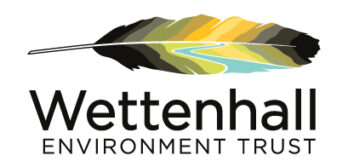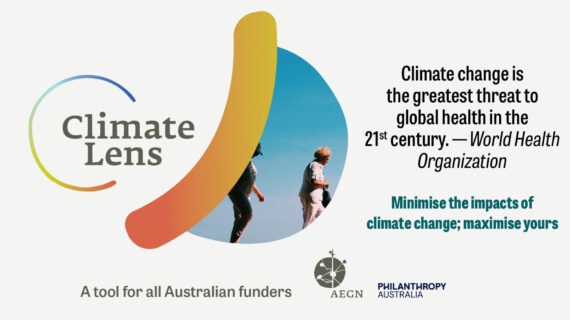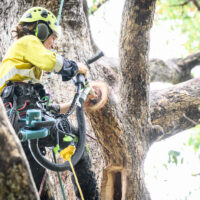
Wollombi Landcare installed 24 artificial hollows for homes for Greater Gliders, using the HollowHog method. They installed cameras to monitor effectiveness and have found evidence of us. We look forward to more work in this area – artificial hollows have better thermal qualities than traditional nest boxes, but the installation costs are higher. Both require monitoring and maintenance so a robust monitoring and data collection program is necessary.
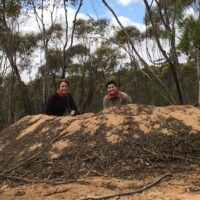
Jessica Keem received just a very small grant to help her with her monitoring of the endangered Malleefowl at the Annuello Flora and Fauna Reserve. She had used LiDAR remote sensing imagery to locate Malleefowl mounds, but needed to get out there and physically ‘ground-truth’ them so they could be included in the monitoring grids. The grant covered her travel costs. Jessica’s data has been added to the information being collected by the National Malleefowl Recovery Group. Her grant has been supported by the Victorian Malleefowl Recovery Group.
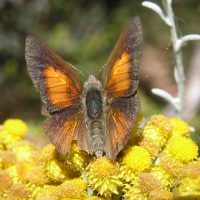
Ecologists Elaine Bayes and Karl Just led a project about the Eltham Copper Butterfly at Kalimna Park in Castlemaine. This is the largest known area of ECBs in the world! But the park is constantly threatened by state-led planned burns. Elaine put together a group of citizen scientists in partnership with a range of local conservation groups to establish a monitoring program – collecting and analysing past data, as well as counting current populations and mapping where they occur. A website is coming…
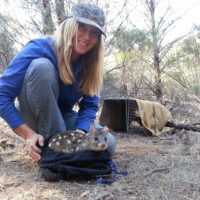
Foundation for Australia’s Most Endangered Species (FAME) – The Western Quolls once lived across mainland Australia. They are locally extinct everywhere except the SW corner of WA. FAME in partnership with Department of Environment and Natural Resources, in the first ever project of this type, has relocated 93 Quolls into the Flinders Ranges over the past 4 years. This project involved monitoring the released quolls and results showed a successful breeding season last year. Therefore feral animal control will continue to help the population stabilise and increase.
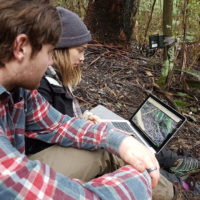
Wildlife of the Central Highlands (WOTCH) is a volunteer-run grassroots organisation dedicated to protecting Victoria’s forests through citizen science. WOTCH set up cameras to monitor species, particularly the Leadbeater’s Possum. Five sightings of the Leadbeater’s Possum captured on the Reconyx motion sensor camera, adjacent to clearfell logging coupes has resulted in approximately seventeen hectares of forest being protected through a Special Protection Zone.
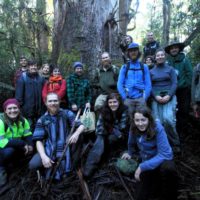
The Goongerah Landcare group works in partnership with a range of conservation groups in East Gippsland in Victoria. They run regular camps in the forest. Our funding paid a coordinator to organise the camps and train volunteers in monitoring, collecting and analysing data. The data collected was used to prepare reports for government on threatened species in the forests like the Long Footed potoroos and Greater Glider and recommendations on management for their conservation.
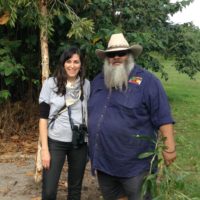
Mungalla Stud is a property in north Queensland that was purchased by the Nywaigi Traditional Owners and run as a commercial cattle station. We gave the Mungalla Aboriginal Corporation a grant to carry out surveys and collect baseline data on terrestrial biota on the sand dune complex next to a beautiful wetland on the property. Before undertaking remedial action, the group wanted to understand what species exist there and how they function and interact with the wetlands. Wettenhall’s Executive Director visited the site and is pictured here with one of the elders from her home town in Ingham.
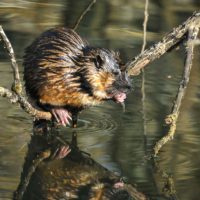
The Australian Platypus Conservancy undertook a project on one of Australia’s least studied mammals – the water-rat. The group carried out a number of community education sessions to prepare citizen scientists for collecting sighting data. They collated all sightings into a report, addressing the lack of information on water-rats in Victoria and now having data to inform future management plans.
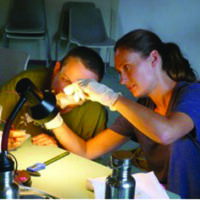
Friends of Organ Pipes National Park received a grant to continue their long term bat monitoring program, a program involving both volunteers and scientists. They are collecting information on population structure, reproductive success, longevity and social associations between bats. Volunteers are trained in handling, processing and identification. The main aim of this particular project is to investigate how bat behaviour is affected by bat box design, placement and orientation.
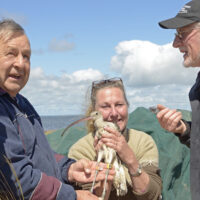
The Victorian Wader Study Group is a respected group who monitor wader birds in Victoria. This project looked at monitoring Eastern Curlews and Sanderlings in Corner Inlet, Gippsland. The grant helped to purchase geolocators (light sensitive data loggers), used to collect data on the birds’ migration routes, stopover locations, breeding destinations and general migration. Collecting this data helps all sorts of groups including BirdLife Australia to work together to protect birds and their habitat.

The Conservation Ecology Centre was funded to monitor wildlife in the declining manna gum populations, in Cape Otway. The decline is partly due to fire and over-foraging by koalas. The group wants to establish baseline data of fauna species in the manna gums, to be able to monitor any changes to biodiversity in the future. Monitoring was done using box and pit-fall traps, dawn chorus, playback surveys, spotlight surveys, and camera traps. Monitoring and recording data is an essential part of this group’s successful operation.
